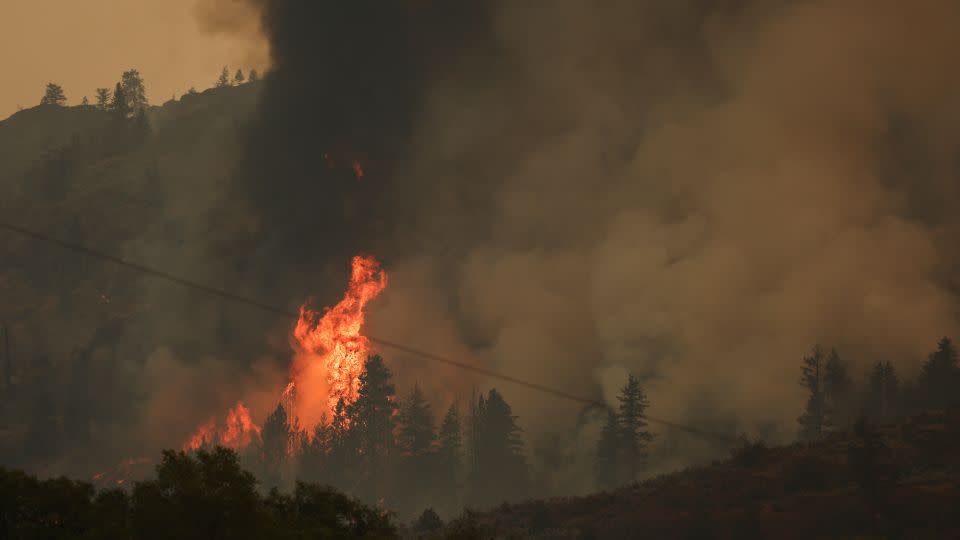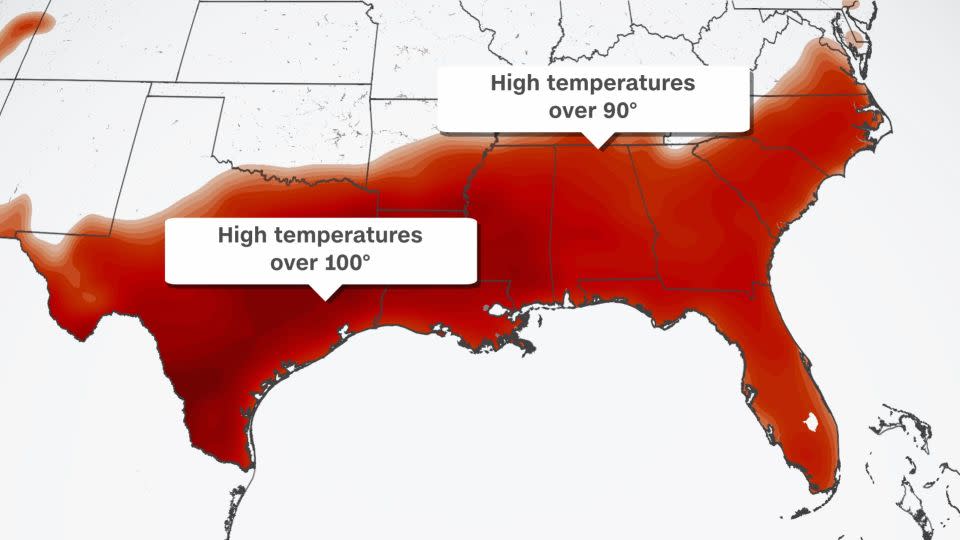Major heat wave creates dangerous fire potential in Pacific Northwest and Canada
Editor’s Note: A version of this article originally appeared in the weekly weather newsletter, the CNN Weather Brief, which is released every Monday. You can sign up here to receive them every week and during significant storms.
The Northwest US has mostly been able to dodge major heat this summer, but it has arrived with a vengeance and could help to stoke and start wildfires, including in parts of western Canada where hundreds of wildfires are raging out of control.
People across parts of Washington and Oregon will face a rare “extreme” level of heat risk through Wednesday with temperatures expected to run as much as 20 degrees above normal.
The “extreme HeatRisk” is the highest possible risk level for heat, akin to a “high risk” for tornadoes. It is meant to warn of significant heat impacts, including heat-related illness, and urge preparation.
The temperatures are forecast to break records: Portland could hit 107 degrees Monday, which would break its old daily record and tie its hottest recorded temperature for August.
Eugene, Oregon, is also forecast to hit 107 degrees Monday, which would shatter its previous daily record of 101 degrees.
All told, more 230 heat records could be broken on Monday and Tuesday across the country.
In addition to the high heat, red flag warnings signaling the increased fire danger cover much of western Oregon and Washington.
Low humidity levels and gusty winds will make for prime fire conditions.

Roughly 2,600 firefighters are out battling the seven large fires burning across Oregon and Washington.
Even small fires, like the Lookout Fire in Lane County, Oregon, can cause issues fast. The 200-acre fire forced evacuations Sunday night, one of two fires forcing evacuations in the county. Weather conditions will cause the fires to easily spread and allow new ones to ignite.
The hot conditions are reaching as far north as Canada which is in the middle of its worst fire season on record. Heat warnings are currently in effect for southern sections of the provinces of British Columbia and Alberta. The hot, dry conditions also fed more fires across British Columbia, where more than 375 active fires are currently burning. More than half of those have ignited in just the last 24 hours.

The exceptional heat also hasn’t let up across the South. The entirety of Louisiana, Mississippi, Alabama and Florida are under heat alerts.
Excessive heat warnings, which is the highest level of heat alert, include major cities like Houston, New Orleans, Atlanta and Jacksonville, Florida.
Heat indexes will be 110 to 120 degrees across these cities.
Some temporary heat relief is coming for parts of the South, minus the Gulf Coast and Florida.
A cold front will push through the region tonight, dropping high temperatures for a large chunk of the heat oppressed back into the upper 80s to low 90s – a much more seasonal forecast.
The low 90s are still hot but will feel like a temporary break from the dangerous heat before it builds back in again by the end of the week.
For more CNN news and newsletters create an account at CNN.com

